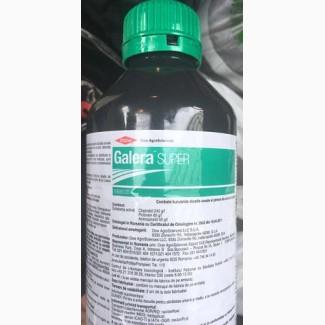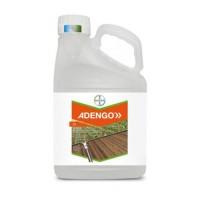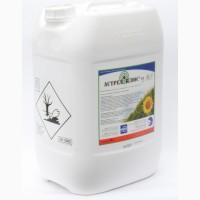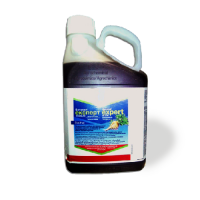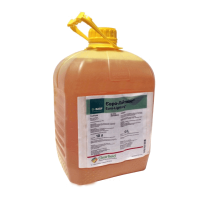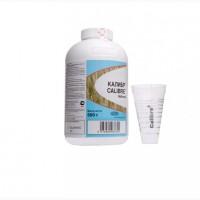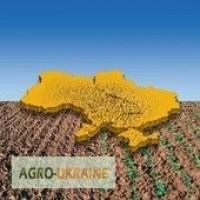Sell / buy
Buy Galera Super herbicide, Kirovohrad region.
Price| ||12747.2$
Region:all of Ukraine,
Kirovograd region.
(Кропивницкий)
Updated:
Galera is a systemic herbicide that is effective against perennial and annual dicotyledonous weeds on rapeseed and mustard crops.
Advantages:
Post-emergence herbicide against dicotyledonous weeds in rapeseed crops
Effective control of weeds problematic for cruciferous crops: daisies, cornflowers, morning glory and thistles
It is non-phytotoxic for the culture if the correct application regulations are observed.
Mechanism of action of the drug:
Galera Super, v.r. - systemic post-emergence herbicide, which contains three active substances, clopyralid, picloram and aminopyralid, which influence the processes of general growth occurring in the plant. Clopyralid, picloram and aminopyralid are synthetic forms of natural plant hormones. Their use as a herbicide leads to the replacement and blocking of the functions of the plant's natural hormones, which ultimately leads to significant disturbances in the growth processes in the plant and, as a result, to its death. The active substances of the drug quickly penetrate the root system, which ensures its high effectiveness against root-growing weeds, such as, for example, thistles. Compatibility with other drugs: Galera Super, v.r. if necessary, it can be mixed with anti-grain herbicides, as well as other herbicides used to combat annual dicotyledonous weeds, resistant to the action of the herbicide GaleraTM Super, v.r., withfungicides,insecticides andfertilizers. When used in spring, do not mix with plant growth regulators or drugs that have such an effect. Before preparing a working solution from a mixture of drugs, it is recommended to check their physical miscibility in a small container. Follow the regulations and recommendations for the use of all preparations of the mixture.
Recommendations for use: The optimal ambient temperature for the use of the drug is in the range from +8 to +25 C. Avoid using the drug immediately after frost or in anticipation of frost the night after treatment. Spraying is recommended at the time of active weed growth in the phase of 2-10 leaves in annuals, and 10-15 cm (rosette) in perennial dicotyledonous and rhizomatous weeds. To achieve maximum effectiveness, the drug must be applied evenly to the leaf surface of plants, using well-regulated equipment. It is recommended to use slotted (flat-jet) sprayers, which provide an average droplet size when spraying. The speed of action of the drug: the first signs of the action of the drug are noticeable after 12-18 hours after spraying. The final destruction of weeds can be expected after 2-3 weeks, depending on the species composition and stage of development of weeds at the time of spraying, the density of the crop standing, environmental conditions before, during and after spraying, etc. The drug shows resistance to being washed away by rain after only 1 hour after application Conditions affecting the growth and development of weeds also affect the speed of movement of the active substance in the plant. Unsusceptible weather conditions can slow down the manifestation of the symptoms of the drug, but do not affect its final effectiveness.(//tractor-service.com)
Spectrum of action of the drug:
Galera Super is a systemic herbicide against perennial and annual dicotyledonous weeds belonging to the Astrovyh, Gubotsvetnyh, Solanovyh, Poppy family and some species of the Buckwheat and Marenovyh families.
An example of sensitive weed species to the action of the drug: ragweed, blue cornflower, seed vetch, triple hibiscus, birch mustard, spreading mountain, seed queen, white marjoram, self-sowing poppy, field milkweed, common marigolds, field forget-me-not, common gorse, garden thistle ) An example of medium-sensitive types of weeds to the action of the drug: medium star (up to 8 cm in diameter), shepherd's bag, field weed.
An example of resistant types of weeds to the action of the drug: cereal weeds.
Selectivity of drug action:
When used in the recommended rates and terms, the herbicide Galera Super is not phytotoxic for regulated crops.
Symptoms of drug action:
Groups of auxins characteristic of herbicides (thickened, bent and twisted shoots, stems and leaves, narrow leaves with hard growths, corrugated leaves, hard growths and cracks on the stems).
Advantages:
Post-emergence herbicide against dicotyledonous weeds in rapeseed crops
Effective control of weeds problematic for cruciferous crops: daisies, cornflowers, morning glory and thistles
It is non-phytotoxic for the culture if the correct application regulations are observed.
Mechanism of action of the drug:
Galera Super, v.r. - systemic post-emergence herbicide, which contains three active substances, clopyralid, picloram and aminopyralid, which influence the processes of general growth occurring in the plant. Clopyralid, picloram and aminopyralid are synthetic forms of natural plant hormones. Their use as a herbicide leads to the replacement and blocking of the functions of the plant's natural hormones, which ultimately leads to significant disturbances in the growth processes in the plant and, as a result, to its death. The active substances of the drug quickly penetrate the root system, which ensures its high effectiveness against root-growing weeds, such as, for example, thistles. Compatibility with other drugs: Galera Super, v.r. if necessary, it can be mixed with anti-grain herbicides, as well as other herbicides used to combat annual dicotyledonous weeds, resistant to the action of the herbicide GaleraTM Super, v.r., withfungicides,insecticides andfertilizers. When used in spring, do not mix with plant growth regulators or drugs that have such an effect. Before preparing a working solution from a mixture of drugs, it is recommended to check their physical miscibility in a small container. Follow the regulations and recommendations for the use of all preparations of the mixture.
Recommendations for use: The optimal ambient temperature for the use of the drug is in the range from +8 to +25 C. Avoid using the drug immediately after frost or in anticipation of frost the night after treatment. Spraying is recommended at the time of active weed growth in the phase of 2-10 leaves in annuals, and 10-15 cm (rosette) in perennial dicotyledonous and rhizomatous weeds. To achieve maximum effectiveness, the drug must be applied evenly to the leaf surface of plants, using well-regulated equipment. It is recommended to use slotted (flat-jet) sprayers, which provide an average droplet size when spraying. The speed of action of the drug: the first signs of the action of the drug are noticeable after 12-18 hours after spraying. The final destruction of weeds can be expected after 2-3 weeks, depending on the species composition and stage of development of weeds at the time of spraying, the density of the crop standing, environmental conditions before, during and after spraying, etc. The drug shows resistance to being washed away by rain after only 1 hour after application Conditions affecting the growth and development of weeds also affect the speed of movement of the active substance in the plant. Unsusceptible weather conditions can slow down the manifestation of the symptoms of the drug, but do not affect its final effectiveness.(//tractor-service.com)
Spectrum of action of the drug:
Galera Super is a systemic herbicide against perennial and annual dicotyledonous weeds belonging to the Astrovyh, Gubotsvetnyh, Solanovyh, Poppy family and some species of the Buckwheat and Marenovyh families.
An example of sensitive weed species to the action of the drug: ragweed, blue cornflower, seed vetch, triple hibiscus, birch mustard, spreading mountain, seed queen, white marjoram, self-sowing poppy, field milkweed, common marigolds, field forget-me-not, common gorse, garden thistle ) An example of medium-sensitive types of weeds to the action of the drug: medium star (up to 8 cm in diameter), shepherd's bag, field weed.
An example of resistant types of weeds to the action of the drug: cereal weeds.
Selectivity of drug action:
When used in the recommended rates and terms, the herbicide Galera Super is not phytotoxic for regulated crops.
Symptoms of drug action:
Groups of auxins characteristic of herbicides (thickened, bent and twisted shoots, stems and leaves, narrow leaves with hard growths, corrugated leaves, hard growths and cracks on the stems).
|
Shop, contacts | |
Olexii / отзывы, инфо. / activity evaluation | |
|
Phone:
+380xxxxxx
show
| |
ID объявления: #832679
(added by a registered user, registration date: 07-18-2018)
Added/Updated: 05-03-2024 10:43 (current, until: 03-05-2025)
Permanent ad address:
Showed / watched for today: ?, total: ?
Similar ads
Among them there are many interesting...
